The Importance of A/B Testing in Website Optimization
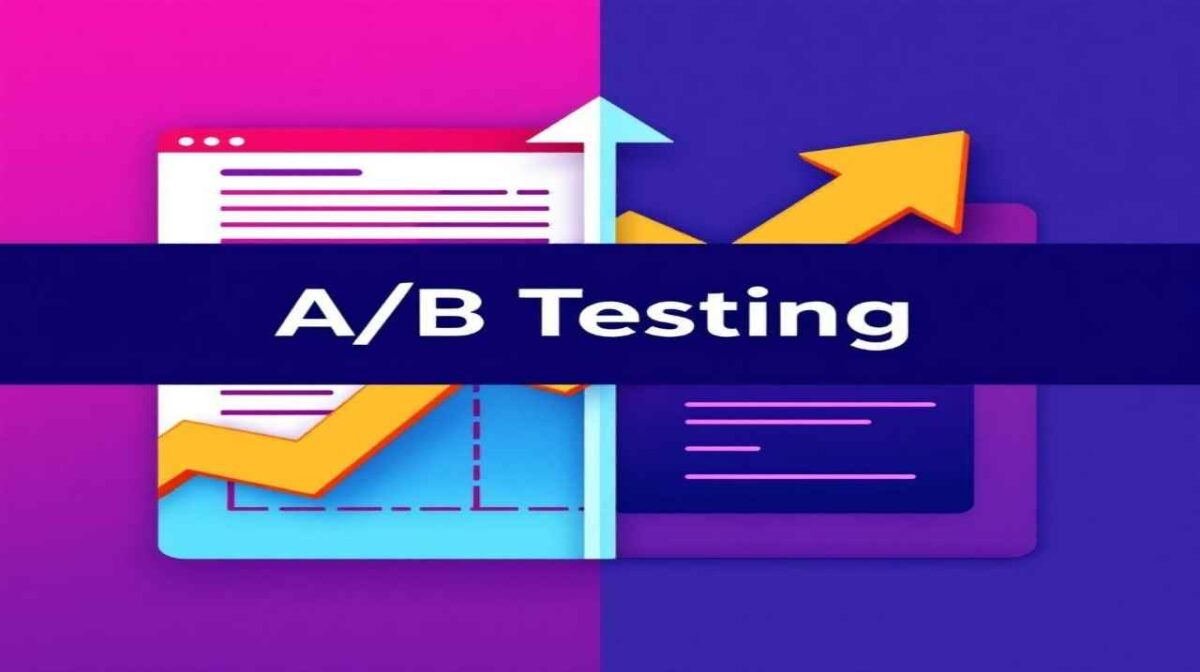
Ever updated your website and hoped for a flood of conversions, only to see nothing much happen? If so, you’re not alone. Most companies have a hard time finding the elements that really connect with their customers. That’s where A/B testing comes in as a game changer.
By splitting the traffic between two versions of a webpage to determine which is better, A/B testing eliminates guesswork from optimization. It allows businesses to boost user engagement, make data-based decisions, and increase conversions.
This post is an analysis of why A/B testing is needed, how it works, and the pitfalls to watch out for. You’ll feel confident about applying A/B testing to optimize your website’s performance at the end.
What Is A/B Testing and Why Is It Important?
A/B testing (or split testing) test compares two versions of a web page, email, or other marketing piece to see which one performs better. For example, you might experiment with two different call-to-action (CTA) buttons – one in green and one in orange – to see which one gets clicked more.
The Role of A/B Testing in Website Optimization
- Identify What Works: Figure out what components are good at engaging visitors; headlines, graphics, page layout, etc.
- Reduce Risk: When you’re making decisions based on data, you’re not wasting time and money on changes that aren’t going to matter.
- Boost Confidence: Know what your audience likes, instead of guessing.
Example
A simple A/B test might involve testing two headlines:
- Version A: “Thousands of Happy Customers Can’t Be Wrong!
- Version B: “Uncover Your Ideal Product in 1 Click!”
You can measure the click-through rates to see which headline is more appealing.
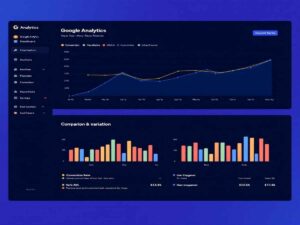
The Benefits of A/B Testing in CRO (Conversion Rate Optimization)
A/B testing is a key part of conversion rate optimization (CRO) and there are certainly actionable insights to be gained that could make a difference to your website’s bottom line.
1. Improved User Experience (UX)
Effective websites prioritize user-friendly designs. With A/B testing:
- You may want to personalize navigation for smooth navigation.
- Test design features such as fonts and page layouts for optimal readability.
- Optimise user flows, like a checkout flow, by uncovering bottlenecks.
2. Better Conversion Rates
The purpose of your website is to turn visitors into leads or buyers. Testing various elements like:
- Button texts (e.g., “Buy Now” vs. “Shop Now”.)
- Landing page layouts
- Color schemes or images
… can lead to much better conversion rates.
3. Data-Driven Decision-Making
A/B testing lets you act on data, instead of trust your gut. For example:
- Understanding which CTA synonyms result in more sign-ups can inform future campaigns.
- A/B testing long term guarantees better decisions by being able to build a history of what works and what doesn’t work over time.
How A/B Testing Works – Step by Step
Step 1. Identify Your Goal
What are you doing? Goals could include:
- Increasing newsletter sign-ups
- Improving click-through rates on buttons
- Increasing sales on a product pulse
For instance, if your aim is to boost CTA clicks, effortlessly zero in on the button design, copy, or placement as well.
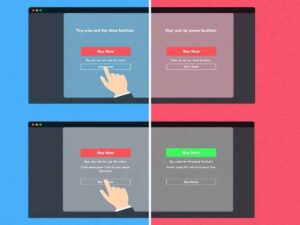
Step 2. Select an Element to Test
There is a temptation to try it all at once, but keep it manageable and start small. Focus on high-impact elements:
- Headlines
- CTA buttons
- Images
- Forms
For example, such a change as substituting a product photo with lifestyle image may change emotional engagement.
Step 3. Create Variations
Make two or more versions of the item you chose. For example:
- Version A has a blue “Sign Up Now” button.
- Version B has an orange “Sign Up Today!” button.
Ensure each change is intentional and measurable.
Step 4. Split Traffic
Segment your users with A/B testing tools. You can use platforms like Google Optimize or Optimizely to send half your website visitors to Version A and the other half to Version B.
Step 5. Analyze Results
Outcomes performance can be measured based on your desired measure (clicks, conversions). Leverage tools such as Google Analytics to analyze data and find what is statistically significant.

Common Mistakes to Avoid When Conducting A/B Tests
While effective, A/B tests can be done wrong. Avoid these pitfalls:
1. Testing Too Many Elements at Once
If you’re testing 5 changes on a single page, it’s going to be pretty difficult to determine what may or may not have affected the results. Keep to one variable per test for easy reading.
2. Insufficient Traffic
Small sample sizes mean that results are not reliable. For major takeaways, make sure to run the test until you have had plenty of time to collect enough data (a soft rule of thumb is 1,000 per version).
3. Ignoring the Bigger Picture
It can be fun to play with the button color, but big-picture issues like a terrible UX or irrelevant content usually have a bigger impact! Matching A/B Testing to what the business is set to achieve.
Real-World Examples of A/B Testing Success
Case Study 1. eCommerce Website
A webshop did an a/b test of two product page layouts:
- Product photos appeared at the top in version A, along with an oversized CTA.
- Version B placed customer reviews below the CTA.
Result? Version B drove 20% more sales.
Case Study 2. SaaS Business
A SaaS company tested CTA copy:
- Version A said “Start Free Trial.”
- Version B said “Get Started for Free Today.”
The second version saw a 15% increase in sign-ups.
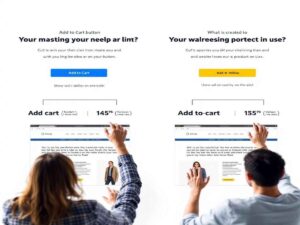
Tools and Resources for Effective A/B Testing
Popular Tools
- Google Optimize: Free and easy A/B testing for beginners.
- Optimizely: Sophisticated testing for enterprise demands.
- VWO (Visual Website Optimizer): Easy test setup with a drag-and-drop feature.
Analytics Integration
Key performance metrics post-test can be measured using tools such as Google Analytics. Create new conversion goals to better understand the effects of your A/B test.
A/B Testing as an Ongoing Strategy
Optimization doesn’t end with one test. A/B testing should be part of your growth and continuous improvement process.
- Regularly evaluate your website’s performance.
- Test new concepts and iterate.
- Higher rates of engagement equate to a lower bounce rate, and therefore, indirect SEO.
Start A/B Testing Today to Transform Your Website
A/B testing isn’t just a buzzword. It’s a proven strategy to:
- Improve user engagement
- Boost conversions
- Make better, data-driven decisions
So take the time to experiment and improve your website’s performance. Get step-by-step instructions and templates with our A/B testing checklist for free. Or if you want professional assistance with finding the right pair, you can reach us here to schedule a personalized consult.
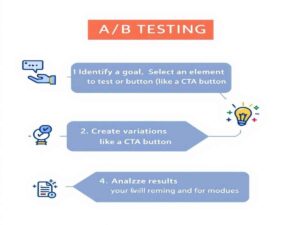
Conclusion
active bloggers, active bloggers numbers are shockingly low, a/b testing, a/b testing for bloggers, a/b testing for busy bloggers, a/b testing for busy marketers, a/b testing for small businesses, a/b testing for small businesses, advanced simply ain’t easy, amateur bloggers, blogging for beginners, blogging upstarts, get the most from your website, how anyone with an online business or a website, how to maximize website, how to optimize web pages, how to optimize web pages, how to test your website, how to test your website, how to test your website works, how to test your website works, plus get all the tools you need to test and optimize your website, Run A/B tests, run a/b tests, run a/b tests simple, should you be a/b testing?, small business marketing, small business website, small business website, what can you a/b test? Through comparisons of multiple versions of your site -be it design, copy, or feature-driven- you can learn what really sizzles with your audience. This doesn’t just makes for a better user experience, it also signifies better conversion rates by converting visitors into a long term paying customers. And you simply can’t beat the intellect of data-based decision making, you’re no longer guessing or gambling with the ad spend – you’re making intelligent decisions that can be measured.
Remember, continuous optimization is key. The digital world is constantly changing, so what is working today might not work tomorrow. With A/B testing you’ll always be a step ahead, continuously optimizing your site to meet the needs of your users and attain business objectives.
There’s no reason to hold off on utilizing A/B testing right away! Do something right now — try your first experiment or collaborate with a Conversion Rate Optimization (CRO) professional. You will turn your website into an amazing, high converting money-making machine which your users will love! Get started with a test now and see how far your site can go!
Frequently Asked Questions (FAQ)
What is A/B testing?
A/B testing is the process of testing two variations of a web page or element to see which one does better. By understanding how users engage with your content, you can make data-driven decisions that will the increase the time users spend on your site and even the likelihood of conversion.
Why do I need A/B testing on my website?
A/B testing helps you find what works best with your users, and adapt the structure of your website to their requirements. This could translate to better conversion rates, user experience, and, as a result, more successful businesses.
Where do I begin with A/B testing?
To run an A/B test on webpage or element, you need to start by setting a particular goal (i.e., increasing your click-through rate or sign-ups) then to produce two variants of the element or webpage. Leverage A/B testing tools or bring a CRO expert on your team to monitor and analyze the performance.
How long do I need to run my A/B test for?
How long should an A/B test run? The time frame a test should run depends on your website traffic, and how confident you want to be in your significance. As a rule of thumb, the test should be at least two weeks to ensure collecting decent data, it will all depend on your context.
Do little changes actually add up to big results?
Absolutely! Even small changes, such as changing the color of a button or modifying headline text, can result in meaningful changes to user behavior. A/B testing lets you identify which tweaks result in more engagement and conversions, even for the smallest ones.





